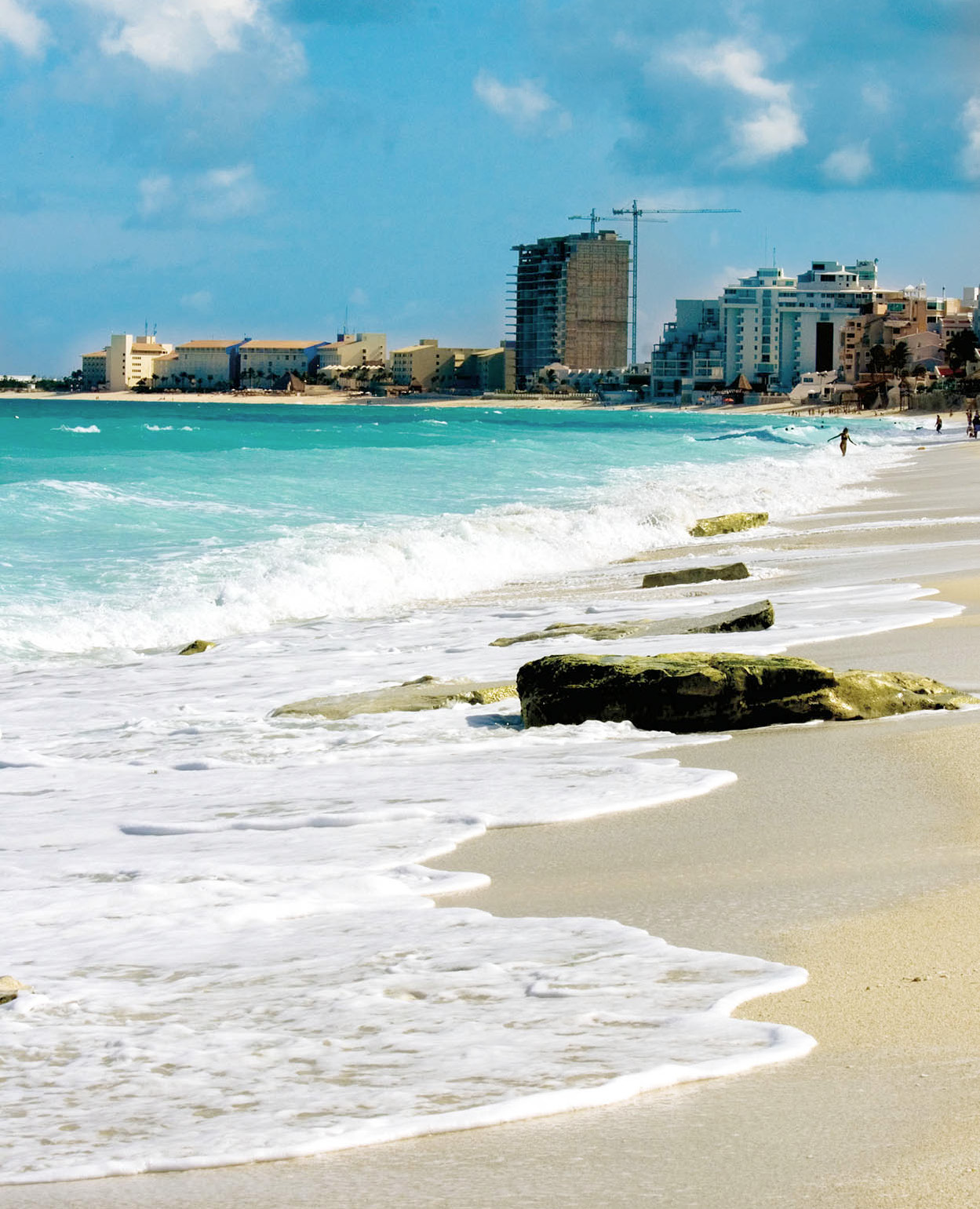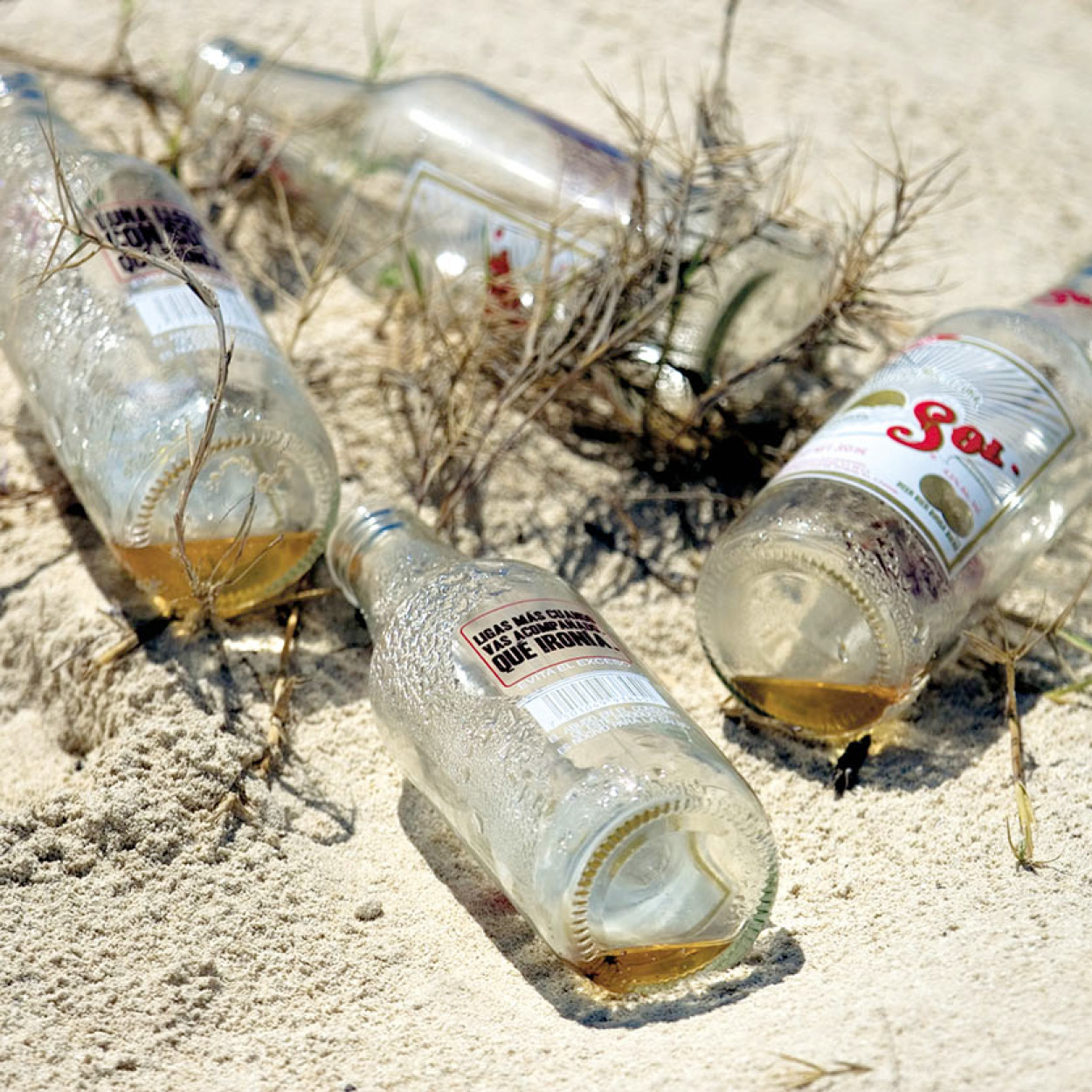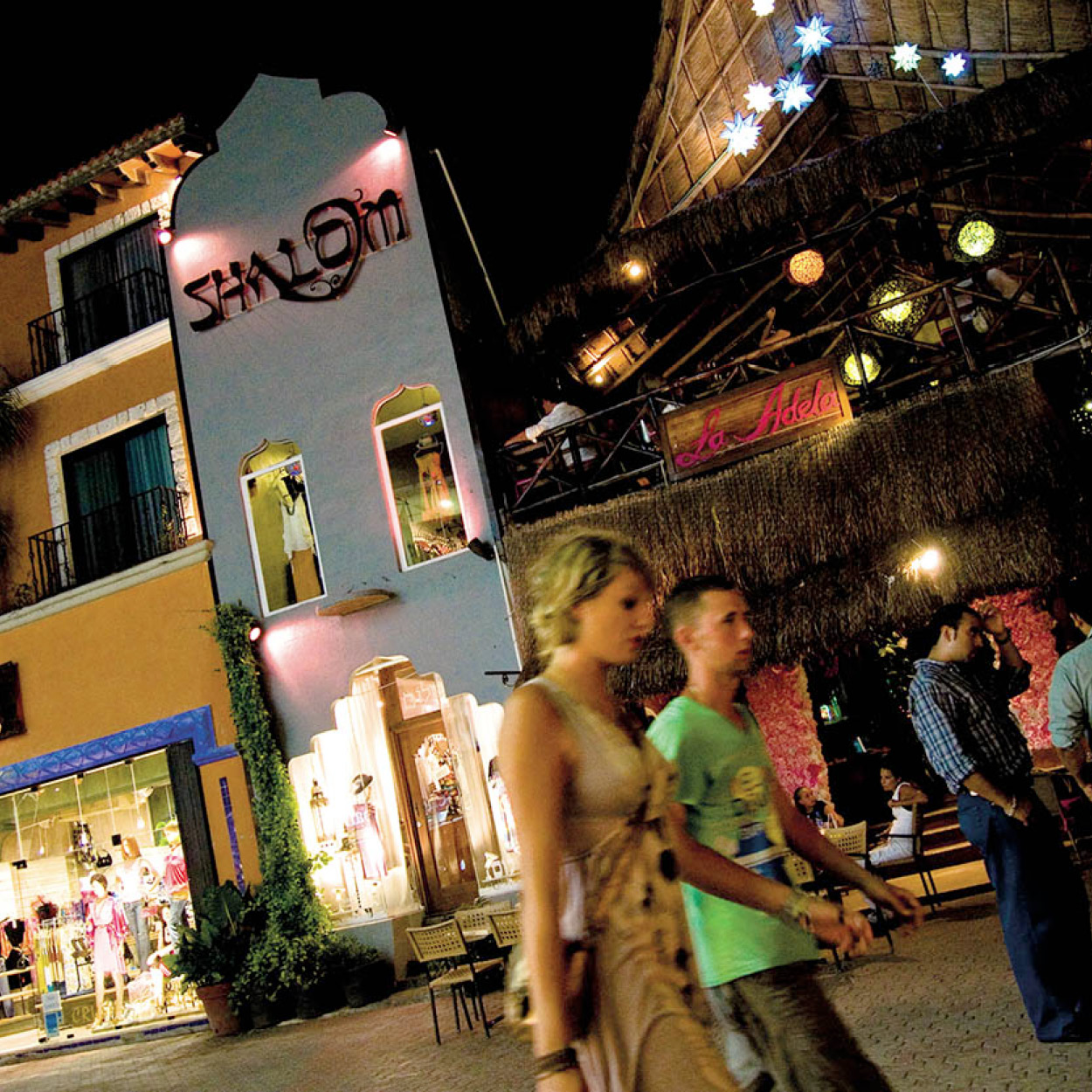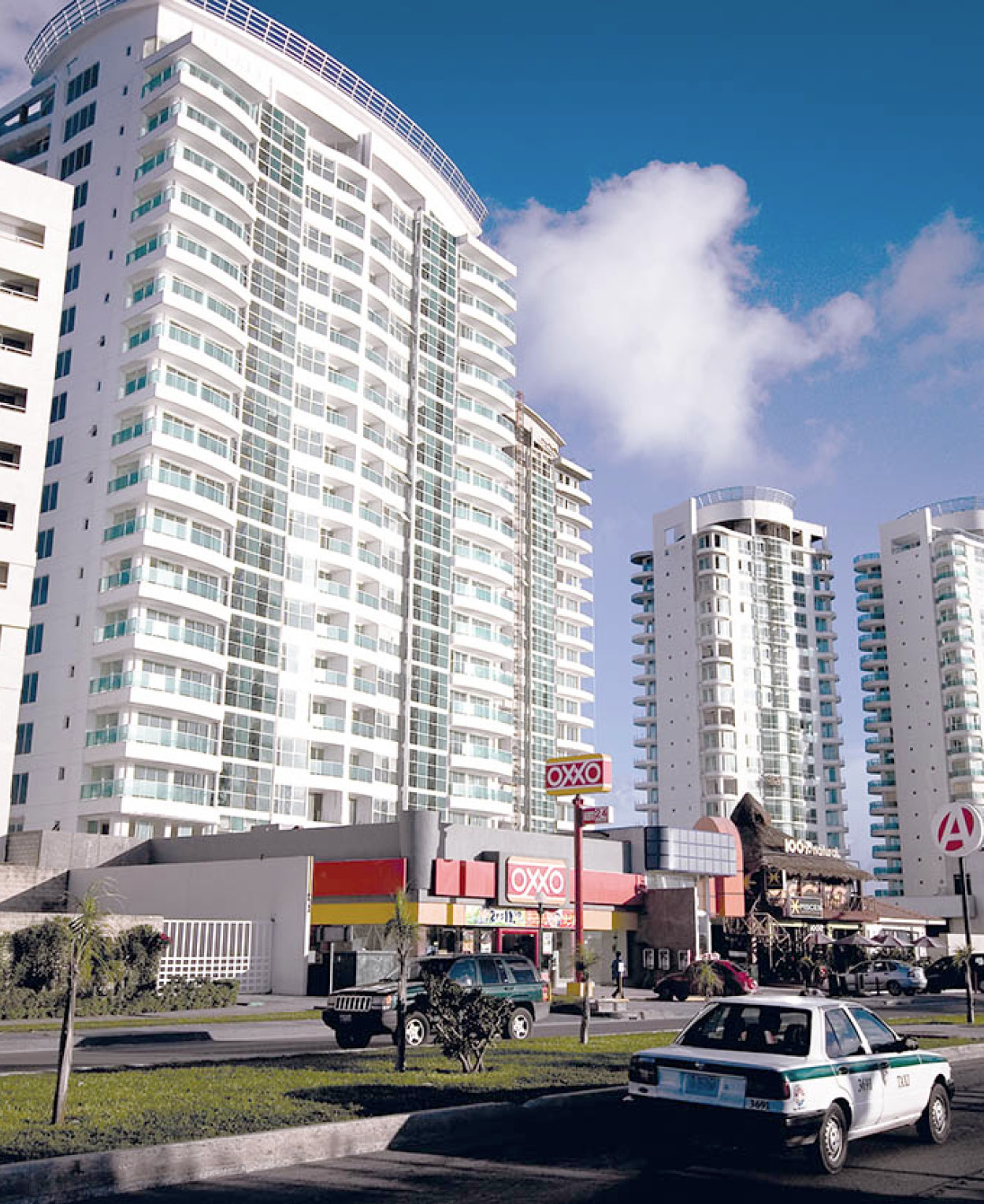Tourist Trap – or Paradise?
The turnover of the region to tourism may have brought much-needed wealth – but at what cost?
Bathed with water so turquoise it seems to define the Caribean dream, blessed with mile after mile of ravishing sandy beaches and boasting a climate that’s utterly tropical, it is easy to understand the meteoric rise of Cancún from desert island to über-resort.
Present-day visitors will probably have trouble imagining how pristine the area was back in the 1960s, thanks to the tens of thousands of hotel rooms, restaurants, marinas, golf courses, malls, and entertainment centers that cover almost every inch of the island.

The hotel strip, Cancún.
Alex Havret/Apa Publications
The unstoppable Riviera
The statistics of Cancún and the Riviera Maya – a tag only dreamed up in 1998, but which has become an inescapable part of the scenery – defy the imagination. The growth of Cancún in 30 years from a few first hotels to a city of 650,000 is widely recognized; it is less well known that neighboring Playa del Carmen , which in 1995 could still be talked about as a sleepy off-Cancún retreat, has grown in population by over 500 percent in little over 10 years, and now contains around 150,000 people.
Bright lights and advertising hoardings can make parts of the Riviera seem quite urban. Their fast growth has caught many creatures unawares: jaguars are still spotted wandering through the woods behind Playa del Carmen.
Much is made of the idea that Cancún’s creation came about through a rational, planned process, after Mexican officials came to the conclusion that (as was maybe a little obvious) the northern Quintana Roo coast was one of the most beautiful places on earth, and ideally located for easy access from North America and Europe. It is unlikely the planners foresaw just how successful their project would be. The explosive expansion of the Riviera has created a new world, one in which tourists have everything on tap and can speak English wherever they go. Elsewhere, it has created new urban realities, in downtown Cancún – conceived as just a “dormitory” for hotel workers, but now very much a real city – or the sprawl of Playa del Carmen.
Tourism is now inseparable from the Yucatán, its economic motor. Few people have not benefited in some way from the income it provides, from middle-class car-rental agents to the Maya farmers who spend a few months each year working on construction sites – although the wealth from tourism is distributed extremely unequally, as wages remain low and many jobs are very insecure.

Unsustainable tourism leads to environmental degradation.
Alex Havret/Apa Publications
Limits to growth
The big potential problems of the Riviera – beyond the open sore of inequality – stem from its sheer, unceasing momentum. Many developers seem to work on the assumption that there are no limits to tourist growth, and that making do with what has been done already is not an option. Many people sneer at Cancún on taste grounds, but as a source of environmental damage it is less significant than all the self-contained, all-inclusive resorts spreading down the coast. Many are built right on the beach, blocking the flow of nutrients between the mangroves and the reefs that is essential for the survival of coral and fish. And the Riviera’s people – tourists and residents – produce vast amounts of garbage, and local authorities are running out of places to put it.
There are now more than 10 golf courses around the Riviera, although this is one of the worst places in the world to build one. All tropical golf courses are surrounded by a cocktail of chemicals to keep back the natural vegetation; in the Yucatán, this quickly sinks through the thin limestone subsoil into the water courses below ground and into the sea.
Resorts commonly attach the “eco” tag to their names, but very few have really adequate drainage systems, taking advantage of lax government controls.
Some local voices are loudly saying that an awareness of long-term prospects is sorely needed, and are trying to develop alternatives. For tourists, there are of course other ways of enjoying the region than going straight from the airport to an enclosed resort, such as diving or taking wildlife tours with small-scale operators. Many such operations are based around reserves and work closely with Maya communities, aiming to ensure a more equitable distribution of the tourist dollar.

Bright lights of the North Riviera.
Alex Havret/Apa Publications
Basic needs for sustainability
Non-utopian environmentalists suggest there are three essential measures needed on the Riviera Maya: a solution to the garbage problem; a complete ban on new building within half a kilometer of the coast; and strict enforcement of proper, filtered drainage standards.
Many developers may only think in terms of their first five-year results, but the future of this coast is tied to its ability to supply its visitors with a beautiful natural environment, and allow its inhabitants, ultimately, to share in the benefits.

Boulevard Kukulcán, Cancún.
Alex Havret/Apa Publications